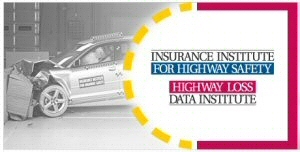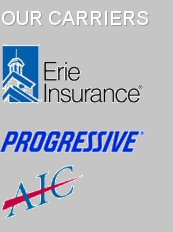 Worker injury and illness will certainly impact your bottom line and your business' productivity. You might have wondered what steps you can take to mitigate that risk and expense. One of the most powerful changes you can make is to implement a workplace safety program. With an effective program in place, absence due to work-related injuries and illness can be avoided. In fact, you could see a decrease your workers compensation risk and expense at the same time. This is especially true since a large part of your premium for workers comp insurance depends upon the frequency of claims.
Worker injury and illness will certainly impact your bottom line and your business' productivity. You might have wondered what steps you can take to mitigate that risk and expense. One of the most powerful changes you can make is to implement a workplace safety program. With an effective program in place, absence due to work-related injuries and illness can be avoided. In fact, you could see a decrease your workers compensation risk and expense at the same time. This is especially true since a large part of your premium for workers comp insurance depends upon the frequency of claims.
First and foremost, your safety program should be compliant with the Occupational Safety & Health Act. In fact, OSHA can provide information as well as consultation and/or training if needed. Compliance with OSHA is important for many reasons, including the impact it will have on your Workers Compensation insurance. Typically, insurance carriers will want to know how complete, comprehensive and effective your workplace safety program is when deciding on your insurance coverage.
Each company’s safety program will look different, but all will usually include safety procedures as well as written guidelines for employees’ reference. A good plan will name Safety Manager located in-house with the responsibility to carry out the program by coordinating safety inspections, providing orientation for new employees and training existing employees as well as motivate the workforce to avoid unsafe practices.
Of course, accidents can occur even though an effective workplace safety program is in place. Therefore, your program should include procedures for on-site first aid care. Moreover, a well-designed program will address the return-to-work protocol to follow after an employee has required absence from work because of work-related illness or injury.
Here at the Daniel Howley Insurance Agency in Rockville, MD, we are available to answer your questions regarding workers compensation and to discuss any other business or personal insurance needs. Please contact us at your convenience for more information.
Already have workers compensation insurance? Why not request a no-obligation policy review to be sure that your rates and premiums are the best for your needs?
Learn More about Workers Compensation
.
Request a Quick Quote for Workers Comp coverage.
 If you’re shopping for a new car or SUV, you now have one more good reason to consider a hybrid. Hybrids, which allow you both traditional gasoline power as well as electric power, have been shown to better shield their occupants from injuries in crashes than their conventional counterparts that only use gasoline engines. This is according to research done by the Highway Loss Data Institute (HLDI), an affiliate of the Insurance Institute for Highway Safety (IIHS) on more than 25 hybrid-conventional vehicle pairs.
If you’re shopping for a new car or SUV, you now have one more good reason to consider a hybrid. Hybrids, which allow you both traditional gasoline power as well as electric power, have been shown to better shield their occupants from injuries in crashes than their conventional counterparts that only use gasoline engines. This is according to research done by the Highway Loss Data Institute (HLDI), an affiliate of the Insurance Institute for Highway Safety (IIHS) on more than 25 hybrid-conventional vehicle pairs.
The study showed that there is approximately a 25% lower chance of injury in a crash when traveling in a hybrid than in its conventional twin. All other things being equal, it is weight that makes the difference since hybrids are about ten percent heavier.
In the past, cars were made smaller and lighter to get better fuel economy; but in doing so, they were at risk for greater damage in a crash and therefore greater potential for occupant injury.
The new HLDI findings are welcome news among green-minded car shoppers who no longer have to choose between safety and fuel economy. Moreover, the less the chance of injuries in a crash the better the likelihood of lower insurance rates – another reason for considering these safer hybrid vehicles.
- View this video for more information: Hybrid vehicle models have lower injury risk
- Find out more about Crash Testing by the IIHS
- Learn more about Auto Insurance
 Occasionally, when we speak to people about life insurance, they say that they don’t really think they need it. In fact, in some cases, they might be correct. That would be the case if they actually have the financial resources allocated to meet the long term as well as the short term needs of their loved ones who would survive them.
Occasionally, when we speak to people about life insurance, they say that they don’t really think they need it. In fact, in some cases, they might be correct. That would be the case if they actually have the financial resources allocated to meet the long term as well as the short term needs of their loved ones who would survive them.
However, when we follow-up with the question, “If you were to die today, are there people who depend upon you and who would suffer financially as a result of your death?” they will almost always reply by saying something between “absolutely” and “possibly”. For those that tell us they still believe their family would be okay without life insurance, we say that may be true. The problem is that we don’t get a do-over on this one.
Take a look at the Brinja Carter story (courtesy of Life Foundation’s Life Lessons).
We need to make a decision about life insurance while we can still do something about it.
How about you? Do you know whether or not you need life insurance? Here is a simple way to judge that.
- Estimate how much your family members would need to meet their financial obligations after you’re gone. Be sure to include expenses that will come up immediately (medical bills, funeral expenses, regular debts, etc.), funds for your family’s everyday expenses for a specific time period (housing, food, transportation, utilities and the rest) as well as savings for future expenses (like college and retirement).
- Now, figure out your family’s income from all sources except, of course, your salary and benefits which will now end.
- Then, if you subtract your family’s income from what they need to meet their obligations, the difference is the amount by which your family will fall short after you’re gone. It is the amount that life insurance should cover. If it is less than zero, then there is no gap for life insurance to cover – that is, assuming that the economy does not take another downturn, that your family does not experience unforeseen difficulties or losses, that nothing else goes wrong.
That sounds easy enough to calculate, doesn’t it? But did you really include everything? Did you remember the taxes and estate settlement costs that your family will incur? Did you remember funds to cover ongoing health care and insurance bills?
If you are uncertain about your need for life insurance or you are wondering if your current policy is sufficient, then perhaps it’s time to seek out the help of a professional.
Here at Daniel Howley Insurance Agency in Rockville, MD, we have helped many people analyze their financial needs and plan for a secure future. We would be glad to do the same for you.
 If you’re a typical car shopper, the safety of the vehicle you choose is highly important to you. Although every new vehicle is required to meet certain federal safety standards, that doesn’t mean that all cars are equally safe.
If you’re a typical car shopper, the safety of the vehicle you choose is highly important to you. Although every new vehicle is required to meet certain federal safety standards, that doesn’t mean that all cars are equally safe.
Moreover, it does not mean that all vehicles are rated by insurance companies to offer you the best insurance policy for your money. A vehicle’s safety ratings impact insurance rates, and each car model’s experience in terms of insurance losses is different. You can see a list of insurance losses by make and model to get a good idea of the insurance claim experience of the vehicles you are shopping for.
You will want to consider the following safety features if you’re in the market for a vehicle:
Crashworthiness
You can get a rating of crashworthiness for vehicles that interest you from the Web site for the Insurance Institute for Highway Safety . While there, check out the current year’s Top Safety Picks to find a list of the safest vehicles based on the IIHS crash studies. You’ll find that more smaller vehicles than ever before have made the List.
Vehicle structural design
In order to well protect the passengers of a vehicle, it must have a strong “safety cage” (the interior compartment where occupants are seated) to withstand forces from the front, the back, both sides and the roof. It must also be designed so that both the front and rear of the vehicle absorbs the impact of a crash, deflecting it away from the safety cage. Find out how these strengths are tested by the IIHS.
Vehicle size and weight
Seatbelts, head restraints and airbags work as a system with the structure of a vehicle to protect its occupants if a crash occurs. Shoulder belts allow upper body movement during normal driving but will lock on impact or during hard braking. Lap/shoulder belts work together with airbags very effectively.. Side airbags are designed principally to protect your upper body, and may also prevent your head from hitting interior structures. Head restraints are required to be installed on the front seats of all new passenger cars to prevent your head from snapping backwards in a rear-end crash.
Anti-lock brakes
Anti-lock brakes pump brakes automatically many times a second to prevent the lockup and loss of control that occurs when braking hard with conventional brakes.
Daytime running lights
These lights can prevent daytime accidents by making the vehicle more visible to oncoming driver.
If you are in the market for a new car, consider sitting down with your insurance agent to discuss how your favorite makes and models might impact the insurance rates you’ll pay before you sign that purchase agreement at the dealership.
Here at Daniel Howley Insurance Agency in Rockville, MD, we have the experience to help you explore your auto insurance options at your convenience. Why not contact us today?
Sources: Insurance Institute for Highway Safety (IIHS); Insurance Information Institute (III)









